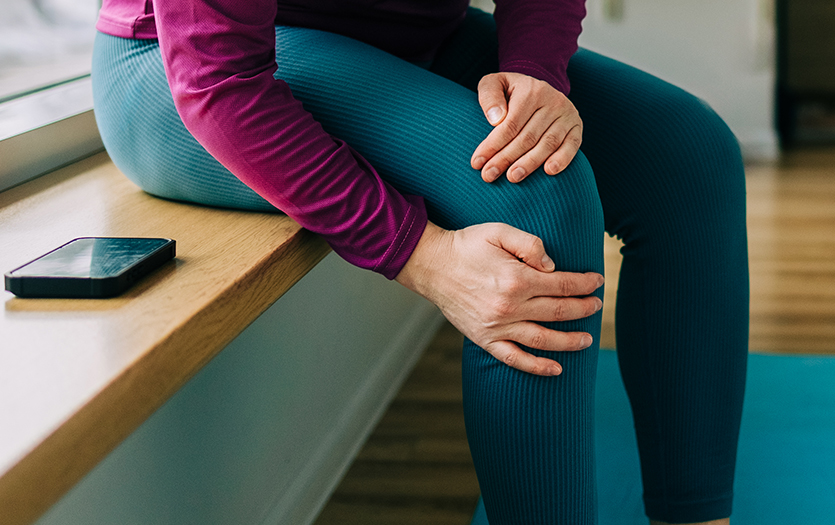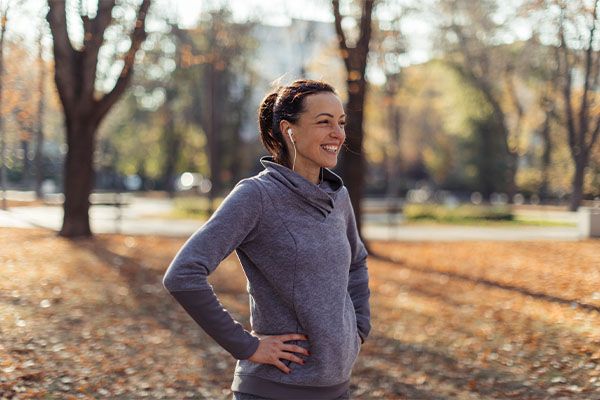
This post was written based on a recent appearance by Jodi Chambers, PA-C, Parkview Ortho Express, on the television program PBS HealthLine.
A physician assistant discusses the various ways parents and caregivers can stay healthy as sideline spectators while supporting their active athletes.
With children heading back to school and fall just around the corner, sports, band and extracurricular activities are ramping up, which means parents and caregivers are spending as much time sitting in the bleachers as their youngsters do on the field, court or stage. And let's be honest, bench seating is not ergonomically correct. Manufacturers did not design them for comfort or support, so it's important that we do all we can to prevent fatigue, pain and injury while sitting in the stands.
What you can do
Just as kids warm up before they play a game or participate in an activity, so should the spectators supporting them in the stands and on the sidelines. Here are six simple and sustainable practices I suggest everyone do to stay healthy this season.
- Exercise – The steps of most bleachers are very deep. If your quads or your hip abductors (the muscles on the side of your legs) are weak, you may have difficulty getting up and down the stairs. And if there isn't a railing to hold on to, you may be at risk of falling. Regular exercise can help strengthen your entire body, including your core which is vital when getting in and out of a seated position and balancing on the bleacher's steps. But despite these healthy habits, you may still feel stiffness and pain with long bouts of sitting. To stay limber during the game, in between quarters, or during halftime breaks, try standing up, stretching your arms and legs, squatting a few times in a row, squeezing your shoulder blades together to open up your chest or taking a walk.
- Practice good posture – People tend to sit more hunched over these days. COVID has only elevated this trend with many working from home, being on their phones or computers all day, and spending most of their lives in a slumped or hunched position. So, when cheering your child on, remember to sit up straight and bring your shoulders back. It might feel odd at first, but it will help keep your hips and shoulders in line while reducing the stress on your back.
- Smart seating – If you know you will be at an event for an extended period, finding a quality seat might be worth the time and money. Fortunately, various options on the market today will help reduce the stress on your back and promote good posture. It could be as simple as a foam seat pad or as fancy as a stadium chair with back support. Some people even opt for bringing their own lawn chairs and bypassing the bleachers altogether. Whatever model you choose, find what works best for you.
- Step it out – People don't realize how sedentary we've become these days. Getting in your daily steps is extremely important and can tremendously impact your body, reducing stiffness and improving flexibility. If you're only getting an average of 4,000 steps a day, try increasing that number by small increments each week. A solid starting point could be an increase of 10% one week, then 10% more the next. Remember, no matter how fast or slow you go, every step counts!
- Vitamin D – It's an essential nutrient that keeps your bones strong, assists with cell growth, offers immune support and is crucial for healthy brain function. Most people can obtain it by getting outside and soaking up some sunshine or adding vitamin D-rich foods into their diet, but supplementation is also an option. However, if you're concerned about not getting enough vitamin D, speak with your provider before adding a supplement into your daily routine. They can help determine what will work best for you and if a vitamin D supplement is necessary.
- Balance – Hip mobility naturally worsens as we age, so stretching and working on balance can help prevent or offset the loss. Just remember to keep it simple. For example, try standing on one leg while washing the dishes or at the counter, then switch to the other leg. By working on your body's proprioception, or awareness of its position and movement, you are preparing it for instances when you feel like you're going to tip over or fall. But instead of toppling over, you can easily correct it. Increasing your base and being appropriate in your lifting mechanics will help you establish a better foundation, reducing your fall risk and injury. There are even physical therapy sessions specifically designed for balance training.
Final thoughts
People are often extremely hard on themselves, adopting an all-or-nothing attitude, so when they fall off track with one thing, they feel like they've fallen off track with everything. But it's not true. Everything is accumulative, and those little things you are doing will add up. You won't derail the progress you've made if you misstep. Instead, give yourself some grace and focus on being 1% better every day. You might be surprised where those little efforts take you in a year.



